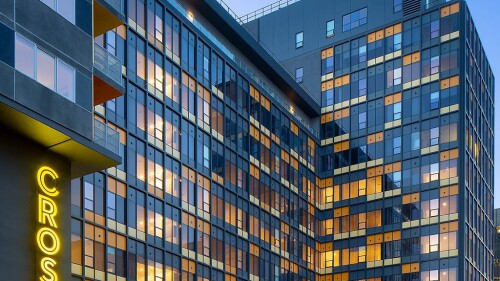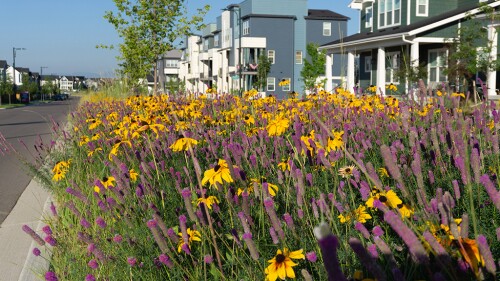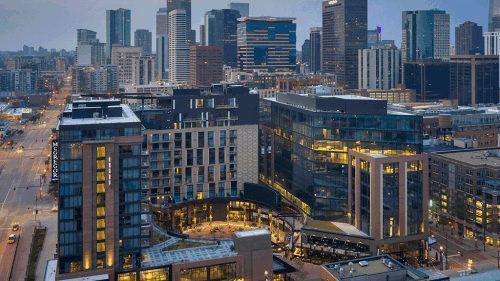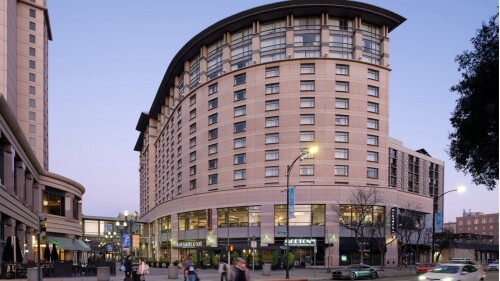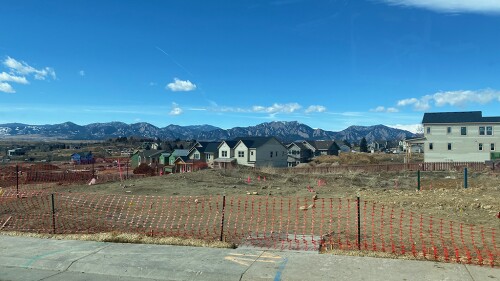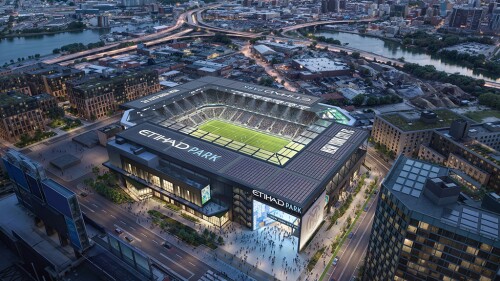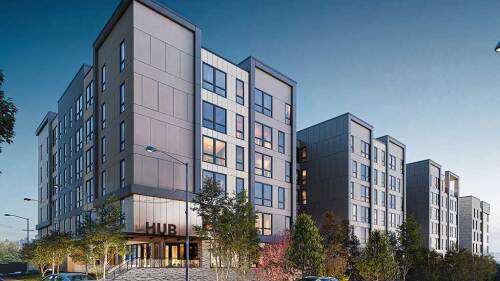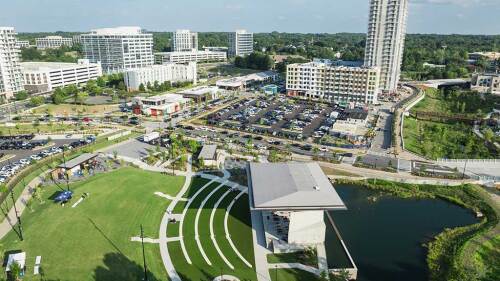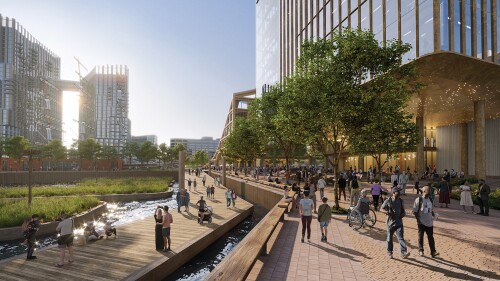In the aftermath of California’s devastating January fires, which caused more than $164 billion in losses, experts are calling for urgent reforms in wildfire insurance policies. Advocates, including Darcy L. Coleman of Alagem Capital, emphasize the need for legislation that empowers the insurance commissioner to mandate incentives for fire-hardening and community mitigation efforts. They warn that, without proactive measures to address skyrocketing premiums and inadequate coverage, homeowners are sure to face heightened financial risks when disaster strikes.
Local governments are rolling out new and updated programs—including tax incentives and zoning amendments—to encourage developers to convert vacant office buildings to some other use.
A new ULI report, supported by C Change and Net Zero Imperative, outlines the key barriers to decarbonization, and presents seven guiding principles that address asset stranding risk.
Sponsored
The exponential growth in data creation and a significant shift toward cloud computing in recent years have driven soaring demand for data centers. Although artificial intelligence (AI) is frequently cited as the primary driver of the surge in demand for these facilities and their construction, JLL’s latest North America Data Center Report reveals a more nuanced reality. The report provides a comprehensive overview of the current market, challenges that the sector faces, and forecasts for the future of the booming data center industry.
Best Practices
A redevelopment plan for a former industrial site in Cleveland presented by a team of Harvard University and Massachusetts Institute of Technology students has taken top honors in the 23rd annual ULI/Gerald D. Hines Student Urban Design Competition. This year’s competition asked students for proposals to create a vibrant, mixed-use, mixed-income area on a former industrial site in on Cleveland’s East Side.
TeamLHBK from the University of Cambridge in the UK has been named the winner of the sixth annual ULI Hines Student Competition—Europe.
Sponsored
U.S. tariffs have increased from around 3 percent to 24.8 percent on a trade-weighted rate—the highest in over a century—and would climb to 32.8 percent if all proposed levies were implemented. The Yale Budget Center conservatively estimates that tariffs will cause the personal consumption expenditures price index to rise 3 percent, cutting household purchasing power by $4,900 annually.
Focus on 2025 Spring Meeting: Colorado
Finding success in deploying a collaborative strategy to combat the local housing crisis.
When Denver’s Stapleton International Airport closed in the mid-1990s, community leaders saw a chance to create a new, 4,700-acre (1,900 ha) community just six miles east of downtown. The project’s original developer, Forest City Stapleton (sold to Brookfield Properties in 2018), kicked off an urban transformation that is now nearing completion 25 years later. Known for extensive resilience strategies to reduce the effects of drought, flooding, and extreme heat, Central Park’s 12 neighborhoods are home to nearly 35,000 residents, with 60 parks as well as extensive pedestrian and bicycle trails.
The Colorado Rockies’ ownership leased a parking lot adjacent to Coors Field in order to construct McGregor Square, a 3.2-acre (1.3 ha) mixed-use development that serves baseball fans, tourists, and the broader community.
Institute trustee and Foundation governor was a force in Denver real estate
The history of Denver is closely intertwined with the South Platte River. From the city’s initial settlement along the riverbanks in 1858 to subsequent urbanization that altered its natural course, the South Platte has played a significant role in Denver’s evolution. For much of the 20th century, however, metropolitan development turned away from this vital waterway.
Eight years after a ULI Advisory Services panel gathered in the shadow of Pikes Peak to brainstorm about revitalizing Colorado Springs, the recent opening of the $91 million U.S. Olympic & Paralympic Museum in the southwest corner of downtown represents an important cornerstone of the city’s urban renewal effort while bolstering its identity as “Olympic City, USA.”
A Denver developer activates an alley to tie together a hotel, offices, food, and “maker” retail on the site of a former dairy.
Capitalizing on an old warehouse district helped turn around a downtown.
How do you guide the resort and real estate businesses through an erratic economy—and the fickle whims of Mother Nature?
An aerotropolis around Denver International Airport would build on the airport’s access to the world.
Healthy Places: Designing an Active Colorado is a five-year, $4.5 million initiative sponsored by the Colorado Health Foundation. The CHF and its local partners asked ULI to conduct Advisory Services panels in each of the three selected communities. The following are some of the lessons learned.
Industry Voices
By repurposing an underutilized hotel as student housing, San José State University ignites campus life and fuels a downtown resurgence
Helping Boulder County rebuild and strengthen after the Marshall Fire
Phase 2 of the Willets Point redevelopment project is transforming an industrial part of Queens that once-inspired F. Scott Fitzgerald’s “valley of ashes” in The Great Gatsby in 1925. A century later, Queens Development Group—a joint venture between Related Companies, Sterling Equities, and New York City Football Club—is converting 23 acres (9.3 ha) of underutilized land into a $3 billion mixed-use community.
As student housing needs evolve, developers are rethinking design, creating dynamic, experience-driven communities that promote connection and well-being.
When Ballantyne first emerged out of North Carolina farmland, more than 30 years ago, the original developers of this master-planned project already had a concrete vision in mind for its future: evolution. The development team intrinsically understood that, as Ballantyne—an affluent community nestled in south Charlotte—would expand beyond its farmland roots, the project would need to adapt to meet the needs of a more diverse and changing demographic.
Downtown Revitalization
More than a century ago, the Baltimore waterfront was a working harbor. After a massive 1970s redevelopment that turned the area into the centerpiece of Baltimore’s tourism industry, the American Institute of Architects called it “one of the supreme achievements of large-scale urban design and development in U.S. history.” Yet it became insolvent in 2019. Key lessons learned here can prevent this cycle from repeating as we envision what the next 100 years might hold for the center of Charm City.
Nestled in the shadow of SSM Health’s new $550 million hospital and Saint Louis University’s medical and undergraduate campuses, the former Steelcote Manufacturing Company Paint Factory and its neighboring parcels constituted a forgotten remnant of St. Louis’ proud industrial past. Few observers, if any, envisioned the area’s potential for housing not only students and hospital employees but also national entertainment options such as Topgolf and a major retailer, Target.
Obsolete buildings will constitute up to 50 percent of all new housing in cities


